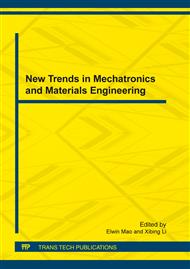p.101
p.105
p.111
p.116
p.121
p.126
p.130
p.135
p.139
Characteristic Analysis on Heavy Hydrostatic Bearing of DVT500 Vertical Lathe
Abstract:
With increasing demands for product quality, and the performance of assembly equipment plays a decisive role for product quality, national experts and scholars conduct in-depth research on the performance of the assembly equipment. In this paper, a research simulation on hydrostatic bearing performance of heavy-duty vertical lathes DVT(digital vertical tool) 500 is carried out by using finite element software FLUENT to simulate the fluid pressure field and temperature field distribution of sector oil recess at different work platform rotational speed. The law of these field distributions is also obtained. The results show that: the rotational speed of the work platform has a greater impact on pressure field and temperature field of gap fluid flow. Numerical results can reflect the true hydrostatic bearing fluid movement, the actual simulation results provide a theoretical basis for optimization design of the Engineering hydrostatic bearing oil cavity.
Info:
Periodical:
Pages:
121-125
Citation:
Online since:
January 2012
Authors:
Keywords:
Price:
Сopyright:
© 2012 Trans Tech Publications Ltd. All Rights Reserved
Share:
Citation:


